Would you care to dance with the dead? WaterStep employee Jordan Maiden was recently invited to witness and photograph an ancient ritual while in Malawi

Gule Wamkulu, meaning “The Great Dance” is an ancient practice of the Chewa people in, Malawi. The dance traces back to at least 300 A.D. as a way for the village to communicate with their ancestors’ spirits. Dancers are said to “put on” a spirit when they put on a mask and start dancing.

The dance itself is a morality play with often dark and menacing themes. The masks, or spirits, the dancer puts on are the embodiment of the lesson to be learned. These lessons can range from the dangers of drugs, alcohol, laziness or witchcraft to more modern themes such as HIV/AIDS or current political and social issues.
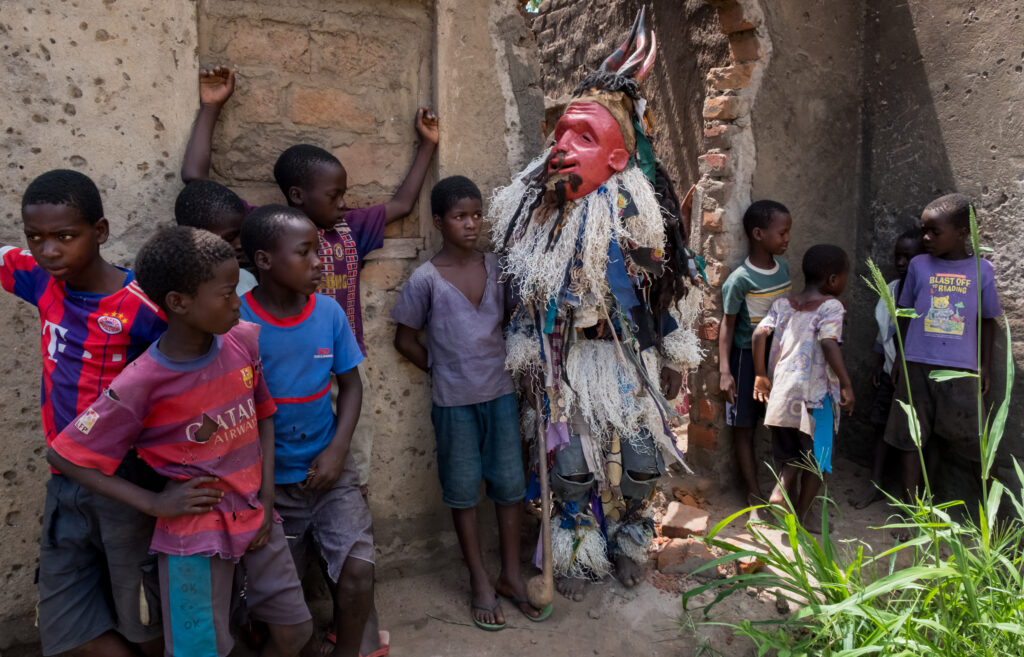 Certain Gule, representing evil spirits, evoke fear from the crowd. Here, all the children avoid looking directly at the dancer.
Certain Gule, representing evil spirits, evoke fear from the crowd. Here, all the children avoid looking directly at the dancer.
These dancers form a secret society, called Nyau, whose membership, rituals and practices are a closely guarded secret sometimes protected through violence. Nyua can be translated as the presence of the dead or an encounter with a spirit.
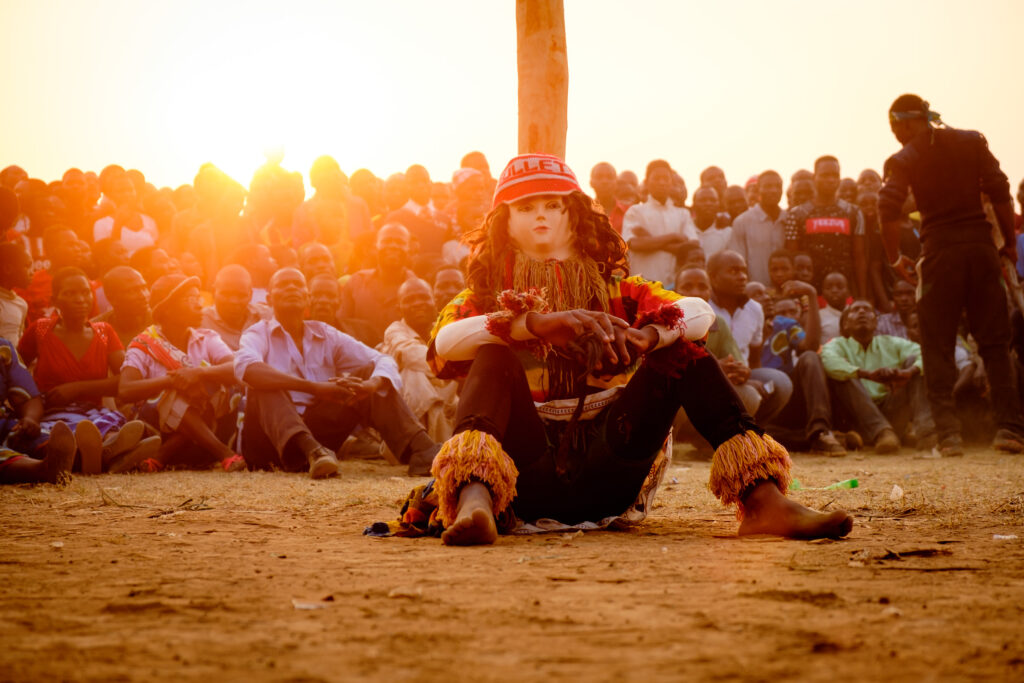
Gule Society
Both men and women of the Gule society take on the task of teaching morality to the children of the village. The rituals, mask construction, lessons and indoctrination are completed under the cover of night in the village graveyard.
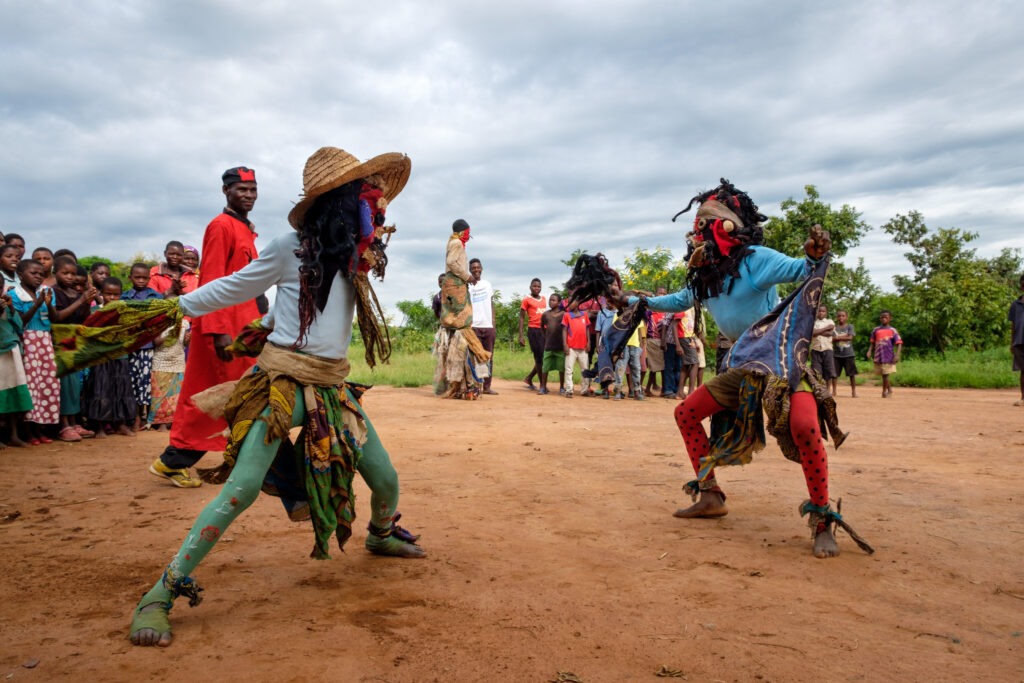
Spirits Speaking Through Dance
The dance moves, combined with women singing and the rhythm of the drums, explain the character of a spirit.
- A violent spirit will use exaggerated movement and chase people.
- An egotistical spirit will act aloof and will keep their head elevated.
- An adulterous spirit will flirt with the women at the event.
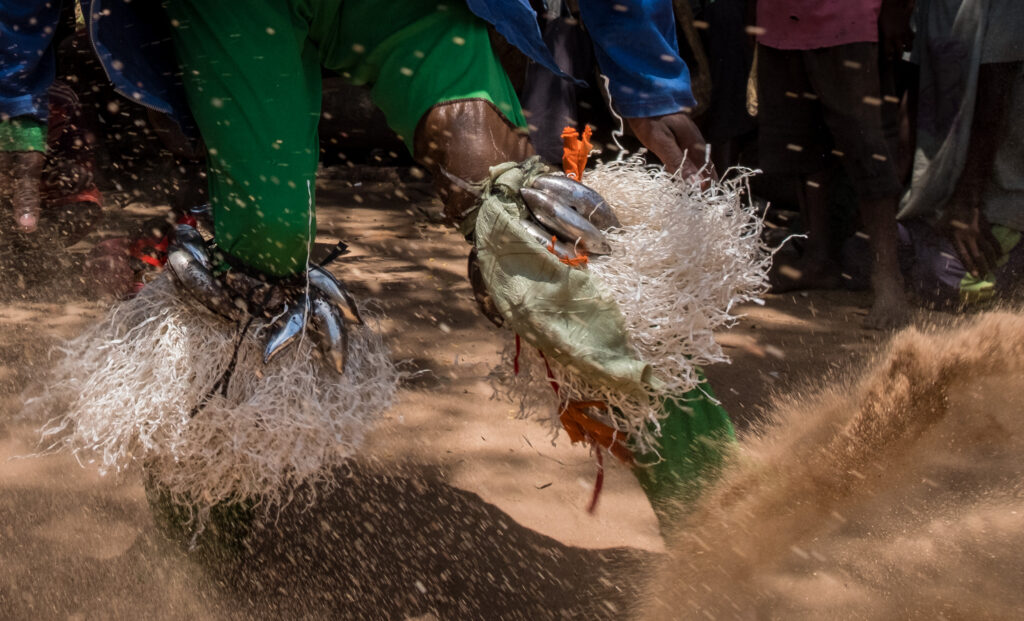
While the dances and songs are rehearsed and passed down through generations, women will often improvise to discuss current events. Thus, the dance can serve as a forum to discuss current situations that may be uncomfortable to speak about. Through dance, the community can debate a difficult problem and come to a solution.

Thousands of masks have been made, and it can be difficult to determine the exact meaning behind each one without the context of the women’s song. However, there are some generally consistent themes:
- A red face often is considered an outsider. This can be someone from outside the community or someone within the community who has been ostracized.
- Horns often represent witchcraft, as practitioners used to hide their potions inside of animal horns.
- Power can be represented by a fly whisk that the dancer uses to smack people.
As social and political issues change, masks may be retired from use. Others that are popular with crowds may change meaning over time as well.
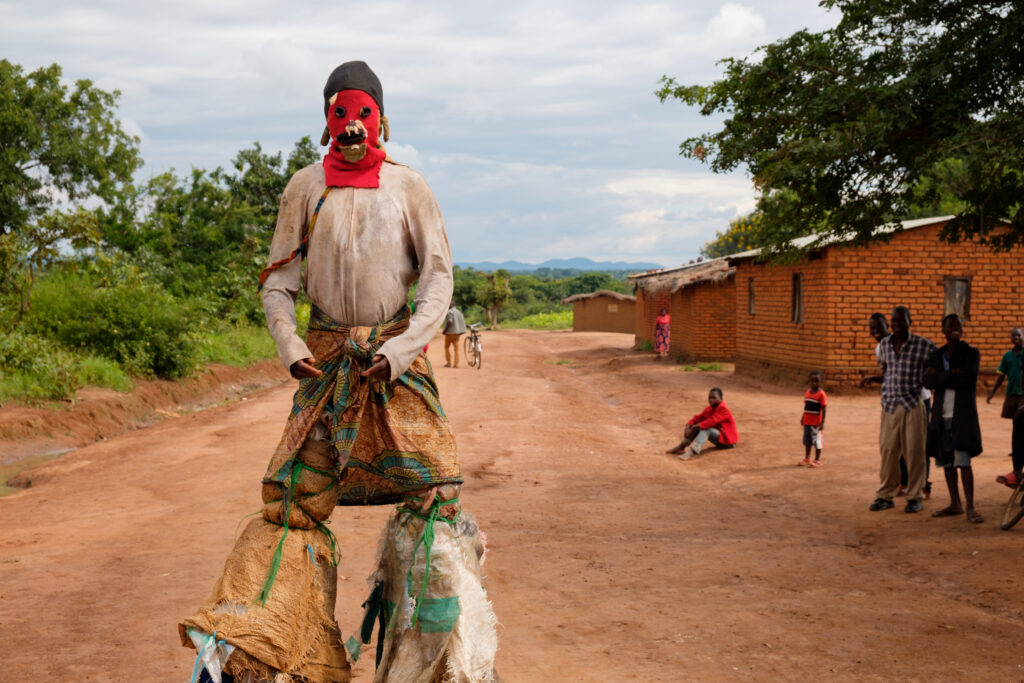 The dancer on stilts is a crowd favorite and its meaning has evolved overtime.
The dancer on stilts is a crowd favorite and its meaning has evolved overtime.
However, the ideology of the ancient practice hasn’t changed. Gule Wamkulu is still used as a medium for teaching morality and spiritualism, and spirits still anxiously await their turn to dance.

 Children are indoctrinated into the society at an early age through clandestin ceremonies. They must memorize the songs, dances, and codes used by the dancers to identify one another.
Children are indoctrinated into the society at an early age through clandestin ceremonies. They must memorize the songs, dances, and codes used by the dancers to identify one another.
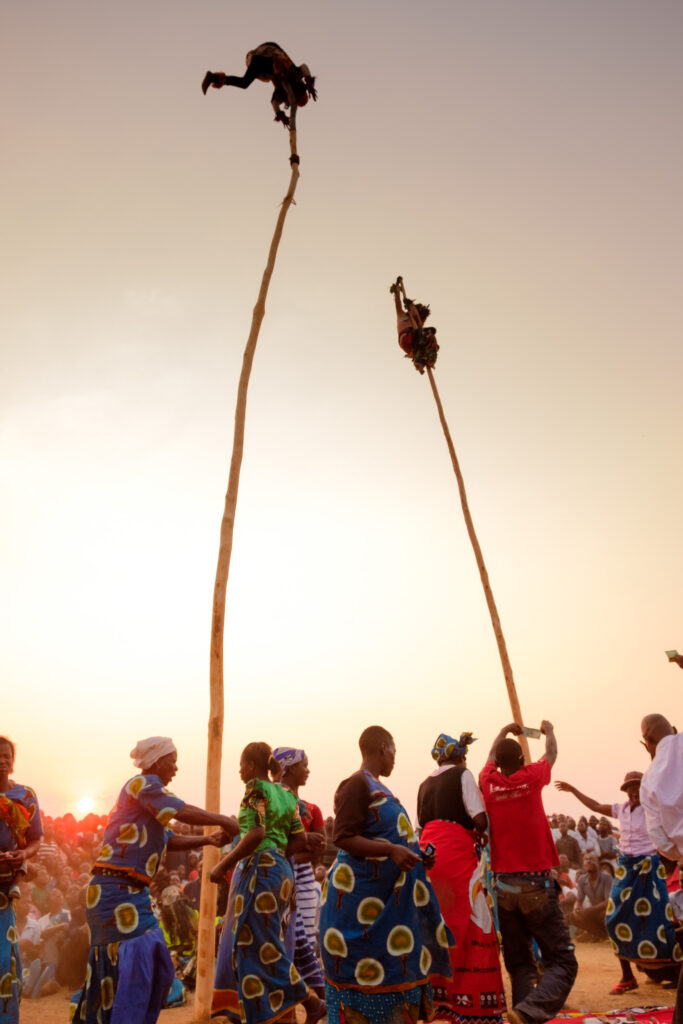
 The Senior Gule are called counselors and can be used by a village chief to enforce ethical behavior. This counselor has used his dancers to fight truancy by scaring children back to school from the market.
The Senior Gule are called counselors and can be used by a village chief to enforce ethical behavior. This counselor has used his dancers to fight truancy by scaring children back to school from the market.
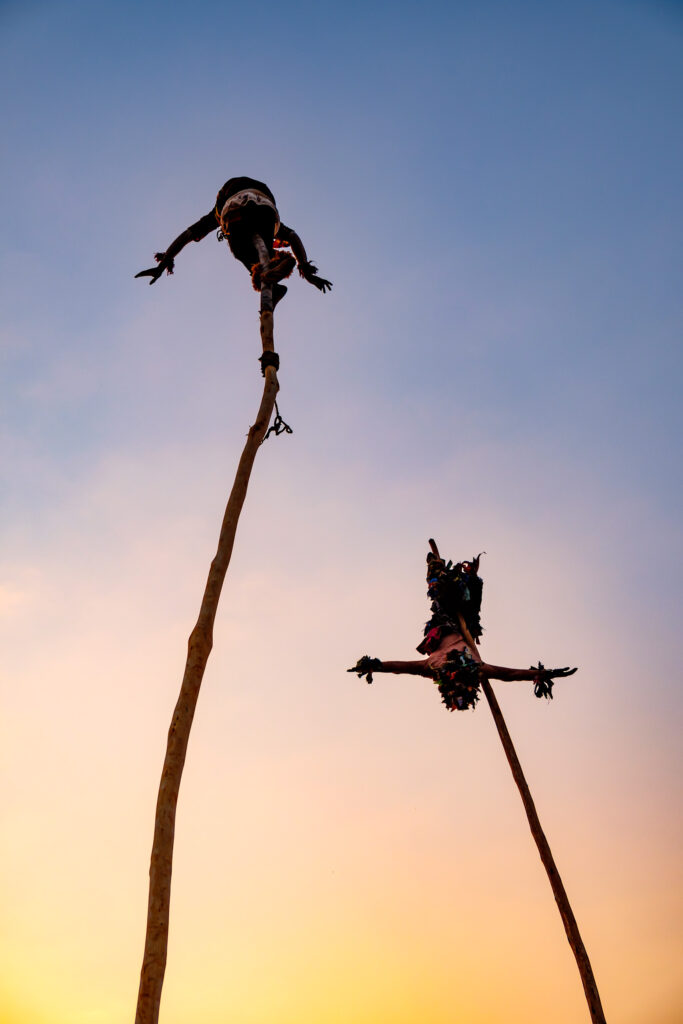
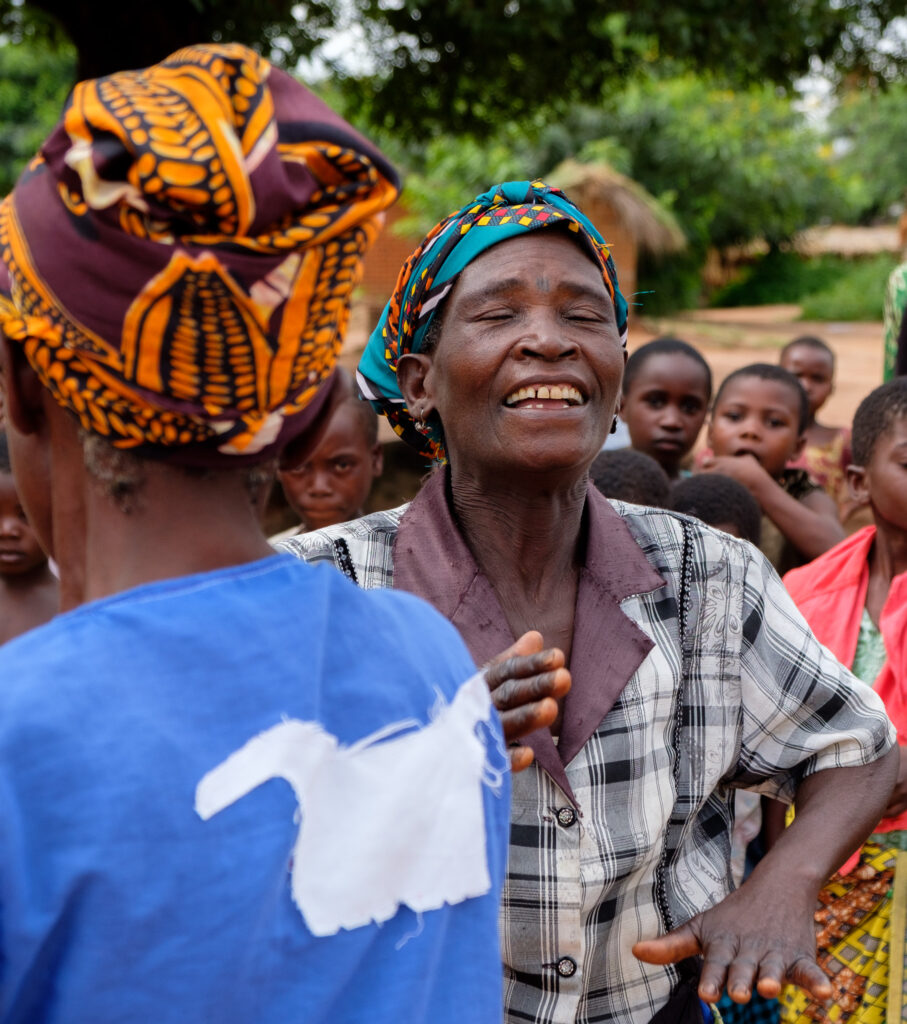 The women’s role is critical and their song provides the context of the dance.
The women’s role is critical and their song provides the context of the dance.
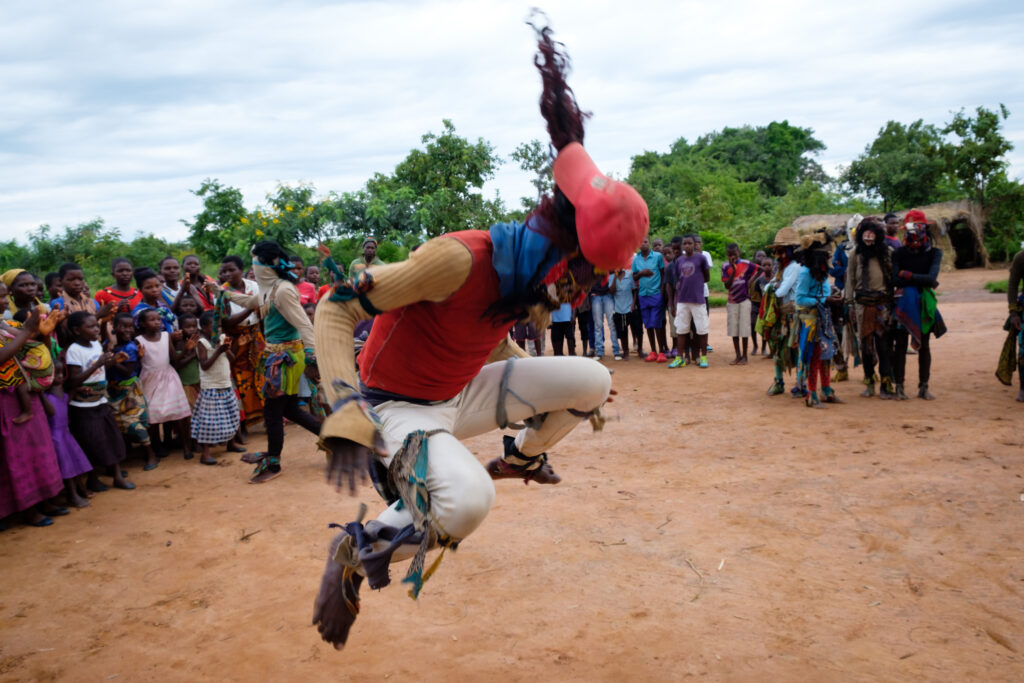 The dances are often very energetic as dancers jump, roll on the ground, chase women and children, and kick up dust.
The dances are often very energetic as dancers jump, roll on the ground, chase women and children, and kick up dust.



